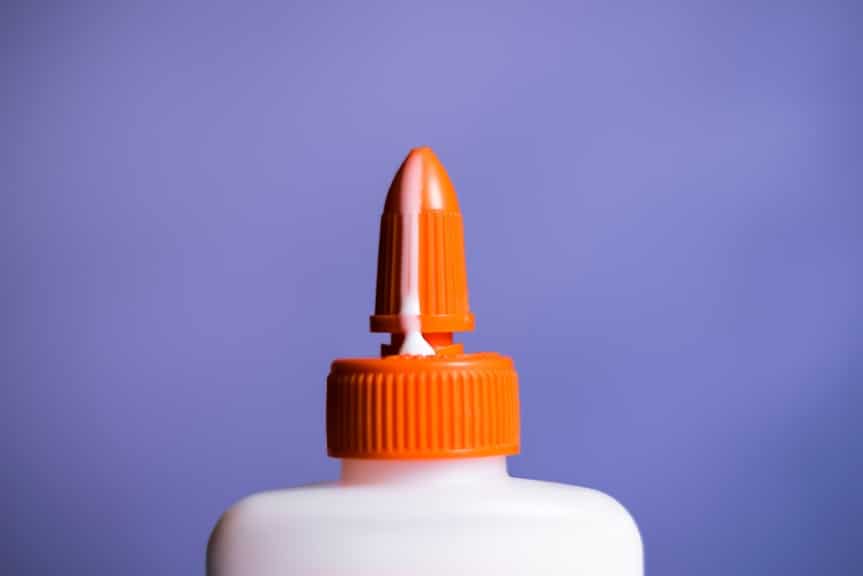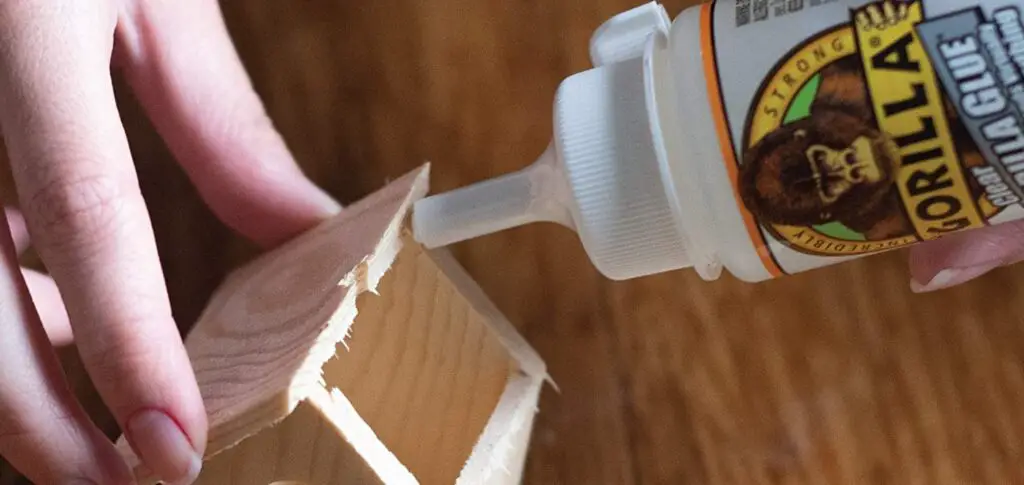When you purchase through links on our site, we may earn an affiliate commission. Learn more...
Gorilla Glue(PU) vs Wood Glue: A Complete Pros & Cons Guide

Choosing the right wood glue is a must whether you are a professional carpenter/woodworker or a casual person who simply enjoys making DIY crafts as a hobby.
On one hand, we have the standard wood glue (also known as White PVA glue) which is the most used adhesive that you will find in every commercial cabinet.
On the other hand, we have a different and maybe more special option which is the Gorilla Glue (also known as polyurethane glue or PU glue). For simplicity reasons we will call the latter Gorilla Glue even though it is just a brand name.
Both are excellent options if you use them correctly and they work on more than just wood. So, let’s get a look into their pros and cons as well as their pricing and usage.
Key Takeaways
- White PVA glue is superior to polyurethane wood glue in many aspects. It’s easier to use, value for money, and non-toxic. Gorilla glue is better for exterior usage and covers wide surfaces of objects more effectively.
- White PVA is a universal type of wood glue that can be used for various materials such as wood, cloth, paper, and fabrics.
- Wood Glue has interior and exterior usage, but it is not waterproof. It is a strong and non-toxic glue and is an excellent option for beginner enthusiasts of DIY and other crafts.
- Wood PVA starts hardening after about an hour of clamping and fully bonds after a day. It is relatively cheap and can last for at least 6 months once opened.
- Gorilla glue is a strong adhesive that should be used mostly outdoors on wooden, metallic, and plastic surfaces as it is waterproof. It’s not recommended for fabrics made from natural fibers such as wool and cotton as it can cause an exothermic reaction and potentially burst into flames.
- PU glue costs around $1/oz and is not a good value-for-money adhesive. It is activated by moisture, so both mating surfaces should be lightly moisturized before use. It can be colored using specific dye products.
White PVA wood glue

When should white PVA glue be used?
White PVA is the universal type of wood glue that’s been used throughout the world. It has various usages such as gluing wood, cloth, paper, and fabrics.
It can be used in both interior and exterior designs, although, exterior usage is not ideal since the glue is water and heat-resistant but not waterproof.
How much does white PVA glue cost?
You can purchase white PVA glue for a pretty low price. You can get a 5 ounces bottle for about $3.
Considering the strength of the glue, you don’t need too much to be effective, hence, it offers you an exceptional price-to-performance ratio. It’s even more efficient than Hot Glue.
Wood Glue Pros
- It’s a strong and non-toxic glue. It’s also kid-friendly.
- It has interior and exterior usage
- An excellent option for beginner enthusiasts of DIY and other crafts
- It’s water, heat, and moisture resistant
- Can be used on multiple surfaces
- Starts hardening after about an hour of clamping so this can allow you to do some extra glue-ups
- A pretty cheap adhesive
- It will fully bond after a day
- If something goes wrong, you can easily clean it up using water
- Once opened, it can last a minimum of 6 months, and based on the environment some bottles can last for years
- Its color will turn transparent after it bonds
- It will generally last for at least a decade before you start seeing signs of delamination
Wood Glue cons
- It cannot be colored which means that if you don’t clean it up completely, you will be able to see it through any used color
- Poor gap-filling capabilities unless it’s mixed with wood shavings
- Not that great for broad areas as it barely expands while curing
- It’s generally not recommended for exterior designing as it’s not waterproof. It can be used only if it’s stated on the bottle.
Gorilla glue (Polyurethane)

When should gorilla glue be used?
Gorilla glue is very strong and should be used mostly outdoors on wooden, metallic, and plastic surfaces since it’s not only resistant to weather but also waterproof. Furthermore, it’s an adhesive that tends to foam and expands as it hardens which makes it the perfect solution to cover wide areas.
Important
You should avoid using polyurethane glue on fabrics that come from natural products such as wool and cotton since this glue has an exothermic reaction to these types of fibers. Expect a similar reaction to those with carbon fiber or fiberglass.
There is a chance your fabric will even burst into flames if you use too much adhesive. If the fabric is not in any of the above categories, it might not get destroyed but you will most certainly not go very far with it.
In my opinion, you should prefer using an E6000 glue for your fabrics.
How should I use gorilla glue?
Gorilla glue works in a different way compared to standard wood glue. To use it correctly follow these steps:
- Lightly moisturize both mating surfaces since the glue is water-activated.
- Apply a thin layer of the adhesive on both surfaces.
- Clamp both objects together for 1-2 hours using a heavyweight.
How much does gorilla glue cost?
Gorilla glue is pretty expensive when it’s compared to other wood glues with its starting price being around $1/oz. It’s not a good value-for-money adhesive and as a result, individuals tend to strictly use it when the conditions are perfect for it.
Polyurethane Glue Pros
- It’s a strong bonding agent.
- Perfect for outdoor joinery as it’s not only weather resistant but also waterproof.
- It expands as the bonding process starts which makes it an excellent solution for those who want to glue 2 wide surfaces together.
- Good for bonding wood to other materials such as plastic, metal, and more.
- Can be used indoors and outdoors.
- Great at gluing somewhat hidden joints.
- It can be colored using specific dye products
Polyurethane Glue Cons
- Gorilla Glue is expensive. Around $1/oz.
- Polyurethane is very flammable.
- Its foaming capabilities make it one of the worst glues when it comes to gap-filling since it will get out of the glued joint.
- Can be irritating for the skin and eyes.
- In most cases, sanding will be required after the bonding process is complete.
- It’s a pretty messy adhesive and harder to clean up.
The Bottom Line
In my opinion, if you want to try gorilla glue, you should purchase a small 1-ounce bottle to see if it works for you. Remember that if you make a mistake with it, it’s way harder to clean up than the common wood glue.
Overall, the white PVA will remain the universal wood glue option for years to come while polyurethane will be used only when the conditions are perfect for it. Let me know in the comments below if you have any further questions about wood glues.


